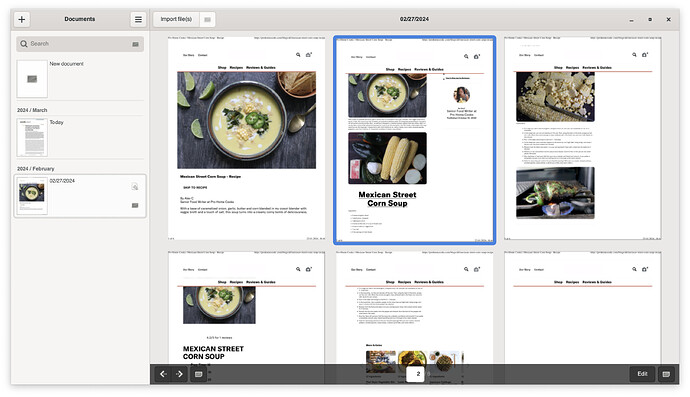Ok I’ve got a running version of Paperwork on my Mac using Homebrew ![]()
Here’s what I did:
brew install gobject-introspection gtk+3 libnotify poppler libhandy tesseract tesseract-lang- Clone git repo and create a virtual environment
- Run
pip install .in every module pip install python-poppler setuptoolsto add missing python dependencies- Disable scanning
paperwork-gtk plugins remove paperwork_backend.docscan.libinsane - Apply this patch:
diff --git a/openpaperwork-gtk/src/openpaperwork_gtk/fs/gio.py b/openpaperwork-gtk/src/openpaperwork_gtk/fs/gio.py
--- a/openpaperwork-gtk/src/openpaperwork_gtk/fs/gio.py (revision 3f51346f3f04dd16f4e7adde78e4e4adc19fab68)
+++ b/openpaperwork-gtk/src/openpaperwork_gtk/fs/gio.py (date 1711078177905)
@@ -3,6 +3,7 @@
import logging
import os
import tempfile
+import platform
try:
from gi.repository import Gio
@@ -581,7 +582,7 @@
return True
def fs_get_mime(self, uri):
- if os.name == 'nt':
+ if platform.system() in ['Windows', 'Darwin']:
# WORKAROUND(Jflesch):
# Gio.File.query_info().get_content_type() returns crap on Windows
# (for instance '.pdf' instead of 'application/pdf').
- Start paperwork with
paperwork-gtk
If I look at all the workarounds necessary for Windows, I guess there are plenty of hidden bugs that we need to sort out.
Anyway, you should probably decide how you want to distribute Paperwork on MacOS. I see two possibilities:
- Using a homebrew formula
- Use gtk-osx as recommended by PyGObject (Application Deployment — PyGObject)
I really don’t have any experience with packaging but I tend to the homebrew approach because it’s easier.
Regarding the CI you requested I’ve found https://circleci.com/ which is also used by Gnome but I haven’t looked into that.
@jflesch Let me know if I should focus on packaging or create a CI runner for the tests.
